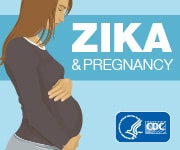About Opioid Use During Pregnancy
Opioid use during pregnancy can affect people and their babies. Pregnant people may use opioids as prescribed, may misuse prescription opioids, or may use illicit opioids such as heroin. It is important for people to be aware of the possible risks of opioid use during pregnancy, as well as treatment options including medication for opioid use disorder. Opioid use disorder is a medical condition that requires appropriate treatment to improve the health of society.
Opioid Use During Pregnancy
In the most recent estimate available, the number of women with opioid-related diagnoses documented at delivery increased by 131% from 2010 to 2017. According to 2019 self-reported data, about 7% of women reported use of prescription opioid pain relievers during pregnancy. Of those, 1 in 5 reported misuse (defined by this survey as getting prescription opioid pain relievers from a source other than a healthcare provider or using them for a reason other than to relieve pain).
Health Outcomes From Exposure During Pregnancy
Opioid exposure during pregnancy has been linked to poor health for both mothers and babies. OUD has been linked to
- maternal death;1,2
- poor fetal growth,
- preterm birth
- stillbirth,
- specific birth defects, and
- neonatal abstinence syndrome (see below).3,4
The effects of prenatal opioid exposure on children over time are largely unknown, including among those with or without NAS. Not all babies exposed to opioids during pregnancy experience signs of NAS, but there could be long-term effects on development that aren’t obvious at birth. More research is needed to better understand the spectrum of possible outcomes related to opioid exposure during pregnancy.
Taking MOUD as prescribed during pregnancy has benefits that outweigh the risks. It is important for healthcare providers and people who are pregnant to work together to manage medical care, including substance use, during pregnancy and after delivery. Pregnant people should consult their physician before stopping or changing any prescribed medication.
Neonatal Abstinence Syndrome (NAS)
Opioid use during pregnancy can lead to neonatal abstinence syndrome (NAS) in some newborns. NAS is a group of conditions that can occur when newborns withdraw from certain substances, including opioids, that they were exposed to before birth. Signs of withdrawal usually begin within 72 hours after birth and may include the following:
- Tremors (trembling)
- Irritability, including excessive or high-pitched crying
- Sleep problems
- Hyperactive reflexes
- Seizures
- Yawning, stuffy nose, or sneezing
- Poor feeding and sucking
- Vomiting
- Loose stools and dehydration
- Increased sweating
Opioids are a class of drugs used to reduce pain. A few examples of opioids are as follows:
- Common prescription opioids include, oxycodone, hydrocodone, morphine, and methadone.
- Fentanyl is a prescription synthetic opioid pain reliever. It can also be made illegally.
- Heroin is an illegal opioid.
- New synthetic substances are constantly introduced into the supply of illicit drugs. These new synthetic substances may not be detected with existing laboratory tests and people who are taking them may not be aware of it.
What is opioid use disorder?
Opioid use disorder (OUD), sometimes referred to as opioid addiction, is a problematic pattern of opioid use that causes significant impairment or distress. It was previously classified as opioid abuse or opioid dependence in DSM-IV criteria.
What is MOUD?
Medication for Opioid Use Disorder (MOUD) refers to the use of medication to treat opioid use disorder. Methadone and buprenorphine are the primary medications for pregnant people with OUD.

American Academy of Pediatrics (AAP)
Clinical Report: Neonatal Opioid Withdrawal Syndrome
Released November 2020 in Pediatrics
PediaLink Course: Plans of Safe Care for Infants Exposed to Opioids
Available through 11/09/2023
PediaLink Course: Recovery-Friendly Care for Families Affected by Opioid Use Disorder
Available through 06/14/2025
Share your knowledge: Neonatal Opioid Withdrawal Syndrome (NOWS) (aap.org)
NAS conditions result from newborns’ withdrawal from certain substances that they were exposed to before birth. NOWS is a subset of NAS and is specific to opioid withdrawal during the first 28 days of life.
The signs a newborn might experience, and how severe the signs will be, depend on different factors. Some factors include the type and amount of substance the newborn was exposed to before birth, the last time a substance was used, whether the baby is born full-term or premature, and if the newborn was exposed to other substances (e.g., alcohol,5 tobacco,5,7 other medications5-8) before birth.
Withdrawal among newborns during the first 28 days of life due to long-term exposure to opioids before birth is called neonatal opioid withdrawal syndrome (NOWS). Opioids given at the time of delivery do not cause NOWS.9 NOWS is under the NAS umbrella and specific to opioid use. For more information about NOWS, including symptoms, treatment, and planning for discharge, read the American Academy of Pediatrics’ Clinical Report, Neonatal Opioid Withdrawal Syndrome.
Treatment for Opioid Use Disorder or Long-Term Opioid Use Before, During, and After Pregnancy
Creating a treatment plan for opioid use disorder (OUD), that may include a medication for opioid use disorder (MOUD) such as methadone or buprenorphine, before pregnancy can help increase the chances of a healthy pregnancy. It is also important to address other health conditions. Some people need to take an opioid medication during pregnancy to manage pain. Quickly stopping opioids during pregnancy is not recommended, as it can have serious consequences, including preterm labor, fetal distress, or miscarriage. Current clinical recommendations for pregnant people with OUD include MOUD, rather than supervised withdrawal, due to a higher likelihood of better outcomes and a reduced risk of relapse.
When making decisions about whether to begin opioids for chronic pain during pregnancy, healthcare providers and patients together should carefully weigh risks and benefits. For pregnant people already receiving opioids, clinicians should access appropriate expertise if considering stopping opioids because of possible risks during pregnancy. Healthcare providers caring for pregnant people taking opioids or MOUD should arrange for delivery at a facility prepared to care for newborns with NAS. For more information, see the Pregnant Women section in CDC’s Guideline for Prescribing Opioids for Chronic Pain.
It is important to recognize that NAS is an expected condition that can follow exposure to MOUD. A concern for NAS alone should not deter healthcare providers from prescribing MOUD. Close collaboration with the pediatric care team can help ensure that infants born to people who used opioids during pregnancy are monitored for NAS and receive appropriate treatment, as well as be referred to needed services.
Support for people in treatment for OUD is critical in the postpartum period—a time of adjustments and increased stressors—which may increase the risk for relapse and overdose events. Continued access to health care and linkage to care for substance use disorders and other co-occurring conditions is important. People with OUD during pregnancy should continue MOUD as prescribed in the postpartum period. Learn more about treatment for opioid use disorder for women before, during, and after pregnancy.
For additional resources, visit CDC’s opioid webpages:
- Opioid Use and Pregnancy | Drug Overdose | CDC Injury Center
- Rx Awareness Treatment and Recovery
- Opioid Basics
- Pregnancy and Opioid Pain Medications (English [PDF – 0.99 MB]] [Spanish [PDF – 223 KB])
Find More Information
For information about the risks of specific opioid medications used during pregnancy, read MotherToBaby’s fact sheets. MotherToBaby experts are also available by phone or online chat to answer questions in English or Spanish. This free and confidential service is available Monday through Friday from 8 a.m. to 5 p.m. (local time). To reach MotherToBaby,
- Call 1-866-626-6847
- Chat live online via the MotherToBaby website
- Send an email via the MotherToBaby website
Find Treatment
- Find a Health Center for Substance Abuse Services
- FindTreatment.gov
- Locator for physicians providing buprenorphine for opioid use disorder
- Locator for programs providing methadone for opioid use disorder
References
- Metz TD, Rovner P, Hoffman MC, et al. Maternal deaths from suicide and overdose in Colorado, 2004–2012. Obstet Gynecol. 2016;128:1233–40.
- Smid MC, Stone NM, Baksh L, et al. Pregnancy Associated Death in Utah: Contribution of Drug-Induced Deaths. Obstet Gynecol. 2019;133(6):1131–40.
- Yazdy MM, Desai RJ, Brogly SB. Prescription Opioids in Pregnancy and Birth Outcomes: A Review of the Literature. J Pediatr Genet. 2015;4(2):56–70.
- Lind JN, Interrante JD, Ailes EC, et al. Maternal Use of Opioids During Pregnancy and Congenital Malformations: A Systematic Review. Pediatrics 2017;139(6):e20164131
- Desai RJ, Huybrechts KF, Hernandez-Diaz S, et al. Exposure to prescription opioid analgesics in utero and risk of neonatal abstinence syndrome: Population-based cohort study. BMJ 2015;350:h2102.
- Huybrechts KF, Bateman BT, Desai RJ, et al. Risk of neonatal drug withdrawal after intrauterine co-exposure to opioids and psychotropic medications: Cohort study. BMJ 2017;358:j3326.
- Patrick SW, Dudley J, Martin PR, et al. Prescription Opioid Epidemic and Infant Outcomes. Pediatrics 2015;135(5):842–50.
- Sanlorenzo LA, Cooper WO, Dudley JA, et al. Increased Severity of Neonatal Abstinence Syndrome Associated with Concomitant Antenatal Opioid and Benzodiazepine Exposure. Hospital Pediatrics. 2019;9(8):1–7.
- Patrick SW, Barfield WD, Poindexter BB, et al. Neonatal Opioid Withdrawal Syndrome. Pediatrics 2020;e2020029074.

